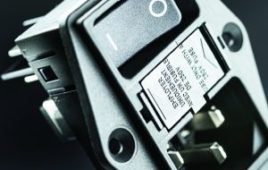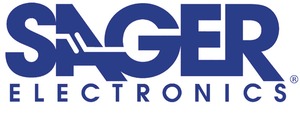There has been a lot of discussion about aggressive sports and head injuries. These conversations are pertaining to the rising concerns of traumatic brain injuries resulting from forceful hits in contact sports. For males, football (US) is the most common sport causing concussions; while for females, soccer (US) is the most common sport. Over the past decade, research and development has focused on the reduction of brain injuries caused by traumatic force applied to the head. Sports are not the only avenue for these brain injuries (concussions). Blasts from wartime interactions, violent shaking and car accidents are other causes of concussions as well; however, these incidences are outside the scope of this article.
What is a concussion?
Defined by the U.S. National Library of Medicine – A concussion is a minor traumatic brain injury (TBI) that may occur when the head hits an object, or a moving object strikes the head.
It can affect how your brain works for a while. A concussion can lead to a bad headache, changes in alertness, or loss of consciousness.
The problem:
A concussion is a type of traumatic brain injury caused by a bump, blow or jolt to the head that can change the way the brain normally works. Concussions can occur in any sport or recreation activity. More than 750,000 mild traumatic brain injuries occur each year in the US, many during a game. If the injury is misdiagnosed, and the player goes back on the field, a second impact injury shortly after the first can lead to permanent brain damage or possibly death. But in the heat of a sports competition, such injuries can be missed.
What causes brain injury?
Any kind of blow to the head can cause a blood vessel to tear under the skull, causing blood to accumulate in that area that will gradually displace the brain — a life-threatening situation if not treated promptly. As the head whips sharply back and forth, the brain can pull away from one side of the skull and smash into the other side with sufficient force to rupture tiny blood vessels. The trickling blood accumulates in the small space between the brain and the skull, and the resulting pressure can lead to permanent brain damage or death if left untreated.
What treatments are engineers developing?
On a recent airing of Nightline (January 31, 2013), Concussion Reduction Therapy (CRT) was one of the topics. Critics and naysayers believe that there is nothing that can prevent concussions. However, one company has created a product aimed at doing just what it proclaims: reduce concussions. Unequal Technologies has designed liners for helmets that add more protection to one’s head from blows. Robert Vito, president of Unequal Technologies, calls the liner a “seatbelt for the helmet.” The lining is 1/8 in. thick, includes a layer of Kevlar, and the synthetic fiber used in bulletproof vests is under a green, rubbery layer. Peel the paper off the Kevlar side and the liner has a sticky side so it can be applied over existing helmet padding. The poster boy for CRT, Pittsburgh Steelers linebacker James Harrison, a dozen of Harrison’s teammates, and Philadelphia Eagles quarterback Michael Vick, use a set of these helmets inserts cutting the risk of concussions. Harrison proclaims that his concussion rate has diminished completely, since the use of helmet inserts. (After the Nightline interview, Unequal Technologies removed the label CRT from its packaging.)
Colorado Springs engineer Troy Fodemski, who specializes in microprocessors and minicomputers, imagined a football helmet lined with tiny sensors that measure the impact of a hit and then deploy dime-sized airbags to protect the head. Like automobile airbags, the helmet airbags would cushion the head during impact. Fodemski’s imagination led him to develop the “smart helmet”. This helmet uses sensors to measure a hit, compare it to a set of criteria, and deploy up to 75 airbags inside the helmet that would precisely cushion the area of impact, thereby stopping the brain from forward movement. This helmet is the first to use airbag technology.
The Department of Biomedical Engineering at Virginia Tech might go down in history as having made an important contribution to the game of football. Since 2003, engineering professor and department head, Stefan Duma, has every Virginia Tech football players’ helmets equipped with sensors. These sensors measure the number of collisions players are involved in during the course of a football game, as well as the severity of them. The technology was originally designed for soldiers in the military, but Duma immediately recognized the potential benefits for football players as well. The data is collected by the sensors, and then uploaded in real time to a computer on the sideline where it can trigger an alert, warning the team’s medical staff any time a player is involved in a major collision.
It has taken many decades to update helmets. The evolution of helmets is as follows: soft leather; hard leather; plastic without inner protection; plastic with inner protection; and, plastic with a polyurethane pad for outer protection. Engineers are playing a vital role in the development of helmet safety. As the game of football progresses, the equipment should progress as well. Since engineering is modernizing everything else in our world, why shouldn’t it modernizing our sports? Thus, current developments, new helmet inserts and extensive head monitoring may save the game of football, as we know it.
Special thanks to American Institute of Physics, U.S. National Library of Medicine , ESPN, and ABC News.
Filed Under: INDUSTRIAL SAFETY SYSTEMS, Power Electronic Tips




